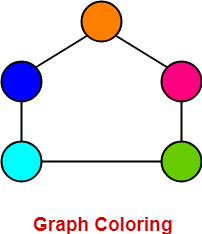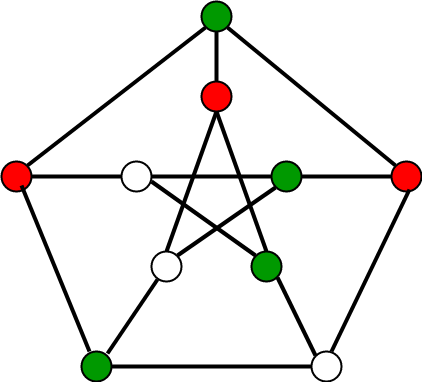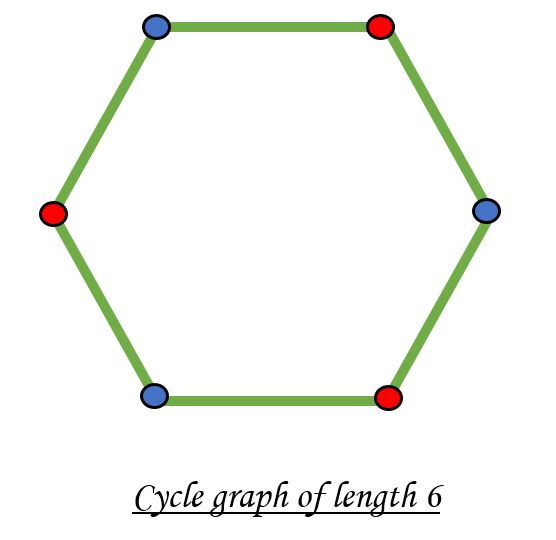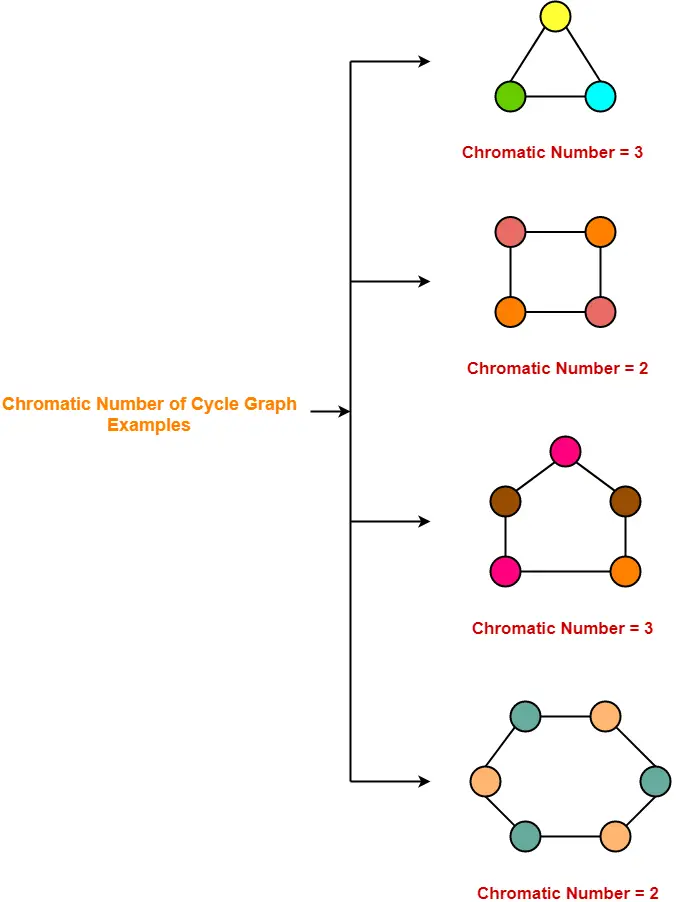K Coloring Graph Algorithm
To elements of a graph subject to. We then apply the na ve color reduction in parallel to these bins to get 1 colors in each bin.

Graph Coloring In Graph Theory Chromatic Number Of Graphs Gate Vidyalay
It is an assignment of labels traditionally called colors.

K coloring graph algorithm. Color any vertex with color 1. Vertices of the graph such that adjacent vertices are 6. It was invented by Alfred Kempe in 1879 for use in his attempt to prove the four-color theorem that every planar graph is 4-colorable.
To the third layer etc. To the first layer blue. If it fails the graph cannot be 2-colored since all choices for vertex colors are forced.
Color first vertex with first color. We then combine two bins at a time and repeat the process. The graph is represented by its Boolean adjacency 4.
To the second layer red. The chromatic number of a graph is the smallest k such that the graph can be k-colored. The K-1 Coloring algorithm assigns a color to every node in the graph trying to optimize for two objectives.
The basic algorithm never uses more than d1 colors where d is the maximum degree of a vertex in the given graph. 01011972 The recursive - smallest - vertex - degree - last - ordering - with interchange coloring algorithm SLI algorithm will color any planar graph in five or fewer colors. Graph Coloring - The Algorithms.
If a graph is properly colored then each color class a color. The K-1 Coloring algorithm assigns a color to every node in the graph trying to optimize for two objectives. Kempe had two more algorithms.
To make sure that every neighbor of a given node has a different color than the node itself. We can improve the color reduction algorithm by a divide an conquer method. Assigned distinct are printed.
Color its neighbors color 2. Sometimes γ G is used since χ G is also used to denote the Euler characteristic of a graph. To use as few colors as possible.
That was Kempes simplest algorithm to 6-color a planar graph. A k-coloring of G is an assignment of k colors to the vertices of G in such a way that adjacent vertices are assigned different colors. 17072018 Algorithm mcoloring k 2.
A k-coloring of a graph is an assignment of one of k distinct colors to each vertex in the graph so that no two adjacent vertices are given the same color. The last bin can be of size between 21 and 41 1. To use as few colors as possible.
01102020 Graph K-coloring Problem. Or in general to K-color a graph in class C such that 1 every graph in class C has a node of degree K and 2 removing a node from a graph in class C gives you another graph in class C. All assignments of 1 2 m to the 5.
We say that a graph is k-colorable if and only if it can be colored using k or fewer colors. Matrix G 1. If G has a k-coloring then G is said to be k-coloring then G is said to be k-colorableThe chromatic number of G denoted by XG is the smallest number k for which is k.
In this section we will see how to color a graph with k colors. In this chapter we will study Kempes algorithm for K-coloring a graph. It doesnt guarantee to use minimum colors but it guarantees an upper bound on the number of colors.
Those algorithms are often good enough for important applications. The algorithm finds a proper m-coloring of the vertices for m G 2. The smallest number of colors needed to color a graph G is called its chromatic number and is often denoted χ G.
A coloring using at most k colors is called a proper k-coloring. Algorithm 2 Kuhn-Wattenhofer color-reduction algorithm. Given the planar graph G we may assume that the vertices are ordered in a smallest-last ordering so that vt has minimum degree in i1i2iil2KG.
5-color a planar graph. 14112013 Following is the basic Greedy Algorithm to assign colors. This means it is easy to identify bipartite graphs.
A K-coloring problem for undirected graphs is an assignment of colors to the nodes of the graph such that no two adjacent vertices have the same color and at most K colors are used to complete color the graph. Continuing in this way will or will not successfully color the whole graph with 2 colors. Conversely if a graph can be 2-colored it is bipartite since all edges connect vertices of different colors.
To make sure that every neighbor of a given node has a different color than the node itself. Basic Greedy Coloring Algorithm. Given a k-colored graph G we rst divide the colors into bins of size 2 1.
This algorithm is formed using the recursive backtracking 3. There is a simple algorithm for determining whether a graph is 2-colorable and assigning colors to its vertices. The Kuratowski Bipartite Graph K 3 3 We run the program on the Kuratowski bipartite graph K 3 3 with n 6 vertices.
Do a breadth-first search assigning red. Let G be a graph with no loops.

Chromatic Number Definition Examples Video Lesson Transcript Study Com

Check Whether A Given Graph Is Bipartite Or Not Geeksforgeeks

Graph Coloring In Graph Theory Chromatic Number Of Graphs Gate Vidyalay

The Welsh Powell Algorithm Example Youtube

Welsh Powell Graph Colouring Algorithm Geeksforgeeks

A 2 Path And The Graphs K 1 3 And K 1 3 The Central Vertices Are Download Scientific Diagram
